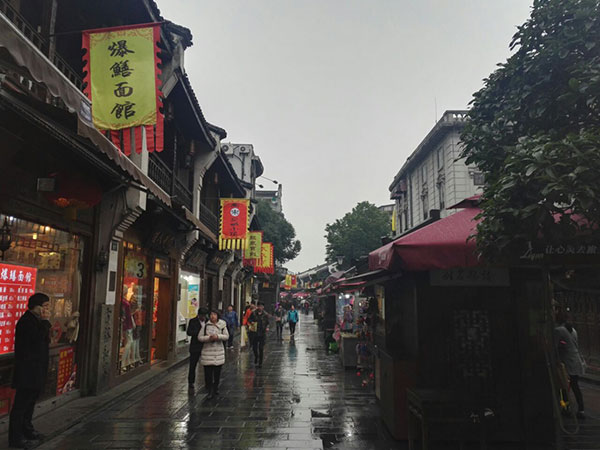Qinghefang Street has been the most prosperous place in
Hangzhou since the ancient time. Since the Southern Song Dynasty, there were lots of shops and restaurants in Qinghefang, as the political, cultural and business center of Hangzhou. Qinghefang Street lies on the foot of the Wushan Hill at the southern end of Yan’an Road, south of Hangzhou with just a few hundreds meters away from the beautiful
West Lake and it occupies an area of 13 hectares with a length of about 460 m. In front of a crystal crafts shop in Qinghefang Street, a group of tourists are fascinated by the exquisite craftsmanship of the shop owner who has even forgotten to do the business. This is a very common scene on Qinghefang Street. Now more and more such shop owners can be seen in Qinghefang Street: those who sell the bamboo flutes play the flute at the shop; those who sell the knitting sweaters knit the sweater; and those who sell the writing brushes make them at the shop. The harmonious combination of such traditional “workshop” model of business operation with the tourism has become an attractive scene to tourists.

Shopping in Qinghefang Street
The culture of tea, medicine, food and various hundred-year old shops as well as folk artists and small stalls fully incarnated the lifestyle and habits of people in old Hangzhou. The Qinghefang Street has restored its history and culture: Chinese Medical Hall, Drug Store, Zhongdetang, Wanlong Ham Store, Wangxing Fan Store, Rongbao Bookshop. The newly introduced spots such as World Coins Museum, Classical Art Museum, Yafengtang Hall, Zhejiang Ancient Ceramic Collection Hall, tea houses, restaurants and Chinese wine cellars, etc.
